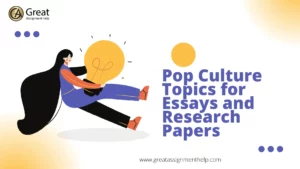Are you an English literature student who is unsure how to write a literary analysis? If yes, then this blog might be useful to you. For your convenience, in this blog, we have shared a sample literary analysis of the short story “A Very Old Man with Enormous Wings”. Continue reading to understand more about the short story “A Very Old Man with Enormous Wings” summary and analysis.
A Very Old Man with Enormous Wings: Overview
“A Very Old Man with Enormous Wings” is a short story written by Colombian writer Gabriel García Márquez in 1968. He has written the story in a satirical genre using past tenses. Similar to several of his fiction works, this story also exemplifies magical realism. Moreover, he narrated this story from the aspect of a third-person omniscient narrator.
Through the title, the author describes a mysterious old man who appears in the courtyard of a home. In specific, the author indirectly represents that the old man is not an ordinary person. Instead, he mentions him as a man who has two massive wings attached to him.
The core of the story is about an elderly man with large wings who crashes into the home of a man whose son is ill. The people from the town gather to view the guy, who some people believe is an angel from heaven. Despite its subtitle, “A Tale for Children,” the narrative contains hard-hitting theological satire.
Before we look at the analysis of the story, first let us see the summary of its plot.
Also Read: What is a Thesis Summary and How to Write it?
A Very Old Man with Enormous Wings: Summary of the Plot
Find here, the summary of the story “A Very Old Man with Enormous Wings”.
A Mysterious Visitor to the Home
One day, when killing crabs during a rainstorm, Pelayo finds a homeless, lost elderly guy in his courtyard. The main has incredibly huge wings. The old man is unclean, appears senile, and speaks incoherent language. After speaking with a neighbor woman, Pelayo and his wife, Elisenda, conclude that the old man is an angel who has come to take their sick kid to heaven. The neighbor woman advises Pelayo to beat the angel to death. But, Pelayo and Elisenda are sympathetic to their visitor, especially after their child heals.
Is He an Angel?
Pelayo and Elisenda keep the elderly man in their chicken coop. Soon, he attracts a large number of curious visitors. Father Gonzaga, the local priest, informs the crowd that the old man, who is shabby and does not speak Latin, is unlikely to be an angel. So, Father Gonzaga decides to consult his bishop for advice.
An Uncontrollable Crowd to Meet the So-Called Angel
Despite Father Gonzaga’s efforts, the news of the old man’s presence spreads quickly, and pilgrims travel from all over to seek wisdom and cure from him. One woman arrives because she has been counting her heartbeats since her childhood and is unable to continue counting. An insomniac pays a visit, claiming that the stars in the night sky are too noisy.
The ill and inquisitive crowd becomes so big and unruly. So, eventually, Elisenda has to start charging an entrance fee of five cents. Mostly, the old man ignores the crowd, even when they pluck his feathers and throw stones at him to force him to stand. But he gets furious when the visitors use a branding iron to see if he’s still alive.
The Act of Spider-Woman
While he waits for the Church’s opinion regarding the elderly man, Father Gonzaga tries his best to control the mob. When a traveling freak show enters the village, the crowd begins to depart. People go to hear the story of the “spider woman,” a woman who was converted into a huge tarantula with a human head after disobeying her parents. Since the tragic story of the spider woman is so well-known, people quickly forget about the elderly guy, who had only given his pilgrims a few meaningless half-miracles. Also, the fee to view the ‘act’ is less than the amount to see the angel.
Annoying Presence
Despite this, Elisenda’s entry fees have made Pelayo and Elisenda extremely wealthy. Pelayo quits his job to build a new, larger home. Also, for several years, the old man stays with them in the chicken coop, while the little boy gets older. When the chicken coop falls, the old man moves into the next shed, but he frequently wanders around the home, much to Elisenda’s annoyance.
The Departure of the Angel
Their boy spends time with the angel in his chicken coop, and both become infected with chicken pox. Pelayo and Elisenda think that the old man is about to die, but he regains his strength. He starts singing sea chanteys, or sailors’ songs, to himself at night as his feathers grow back. One day, the old man spreads his wings and soars off into the sky, and Elisenda watches him disappear beyond the horizon.
Analysis of “A Very Old Man with Enormous Wings”
Here, let us look at the analysis of the short story – “A Very Old Man with Enormous Wings”.
A Fairy Tale
Gabriel García Márquez’s short story “A Very Old Man with Enormous Wings” is subtitled as “a tale for children”. But, in several ways, the story is analyzed as a type of fairy tale. Indeed, its key figure, the old man, who may or may not be a genuine angel or some other bizarre supernatural creature, can be interpreted as a ‘fairy’ of sorts, whose presence corresponds with the improvement of Pelayo’s son’s health.
Magical Realism
Like most well-written fairy tales, this story also combines myth or imagination with more realistic components. Nonetheless, Gabriel García Márquez was intimately identified with the literary trend known as magic realism, with which this combination is also frequently found in works. This magic realist fiction presents a realistic depiction of the world while still incorporating magical elements.
The main magic realist motifs in “A Very Old Man with Huge Wings” are fairly clear: A guy with wings and the ability to fly, whether he is an angel or not; a lady who has been turned into a gigantic spider.
Religious Commentary
Generally, readers of “A Very Old Man with Enormous Wings” who are familiar with the Bible and Christian art will see religious connotations in the old man’s look. Humans with big wings have frequently been referred to as angels, based on the Bible’s portrayal of them. However, the idea of an angel as an otherworldly, cherubic, celestial figure starkly contrasts with the depiction of the old man as very old and covered in muck, with “huge buzzard wings, dirty and half-plucked.” The readers like the characters are unsure about how to interpret him in the context of a holy entity. One such example is Father Gonzaga’s suspicions about the old man and his consultation with the Bishop.
A Very Old Man with Enormous Wings: Character Analysis
Some prominent characters in the story are the Old Man, Pelayo, Elisenda, Father Gonzaga, the Neighbor Woman, and the Spider Woman. But out of all the Old Man and Spider Woman stand unique in the story. Here, let us look at the comparative character analysis of the Old Man and Spider Woman.
Mysterious Old Man vs. Spider-Woman
The plot and its meaning revolve around the Old Man and Spider Woman, which are as much about the two individuals as they are and about how societies react to strange aspects. The elderly man with his big wings is something of a cipher; no one can comprehend the language he speaks, so they are unaware of his thoughts on any topic. We discover that his greatest virtue is patience; he is pleased to wait in the chicken coop and makes few demands of Pelayo and Elisenda, who quickly become extremely wealthy thanks to him.
On the other hand, the spider-woman met her magical destiny due to her disobedience, or rather, her impatience, since her parents prohibited her from attending a dance, most likely because of her age.
These two unique people – one extremely old, the other youthful; male and female; patient and flighty; capable of flying yet immobile on Earth – represent complete opposites in many ways. Indeed, while his hosts make the elderly man into a reluctant circus spectacle, the spider-woman enters as part of a traveling show to sell her story and grab the public’s attention.
They also signify vastly different things. The townspeople are skeptical that the old man is an angel from heaven, but even after Father Gonzaga tells them that the guy is not an angel, they continue to visit the residence in hopes of catching a glimpse of the strange figure. The spider-woman has certainly converted into an arachnid, as evidenced by their own eyes, but no heavenly assertions are made regarding her fate.
Also Read: Captivating Narrative Essay Topics To Consider
Literary Aspect of “A Very Old Man with Enormous Wings”
In this section, let us look at the literary devices such as symbols, themes, and motifs used by Gabriel García Márquez in his short story “A Very Old Man with Enormous Wings”.
The coexistence of kindness and cruelty was the primary theme of the narrative. The story also touches on themes like ambiguity, outsiders, and religious beliefs. The motif of this short story is the prosperity that Pelayo and Elisenda face after the arrival of the old man.
Wings and Spider-Woman are the symbolic representations in the story. Wings symbolize power, speed, and boundless freedom of movement. Although the old man’s wings are filthy and bare, they are magical enough to draw hundreds of pilgrims and tourists. On the other hand, the spider woman illustrates the erratic nature with which many self-centered people approach their own beliefs.
Conclusion
By now, you will have gained a better understanding of “A Very Old Man with Enormous Wings” summary and analysis. In case, you are still unsure how to write a literary analysis, approach us immediately.


